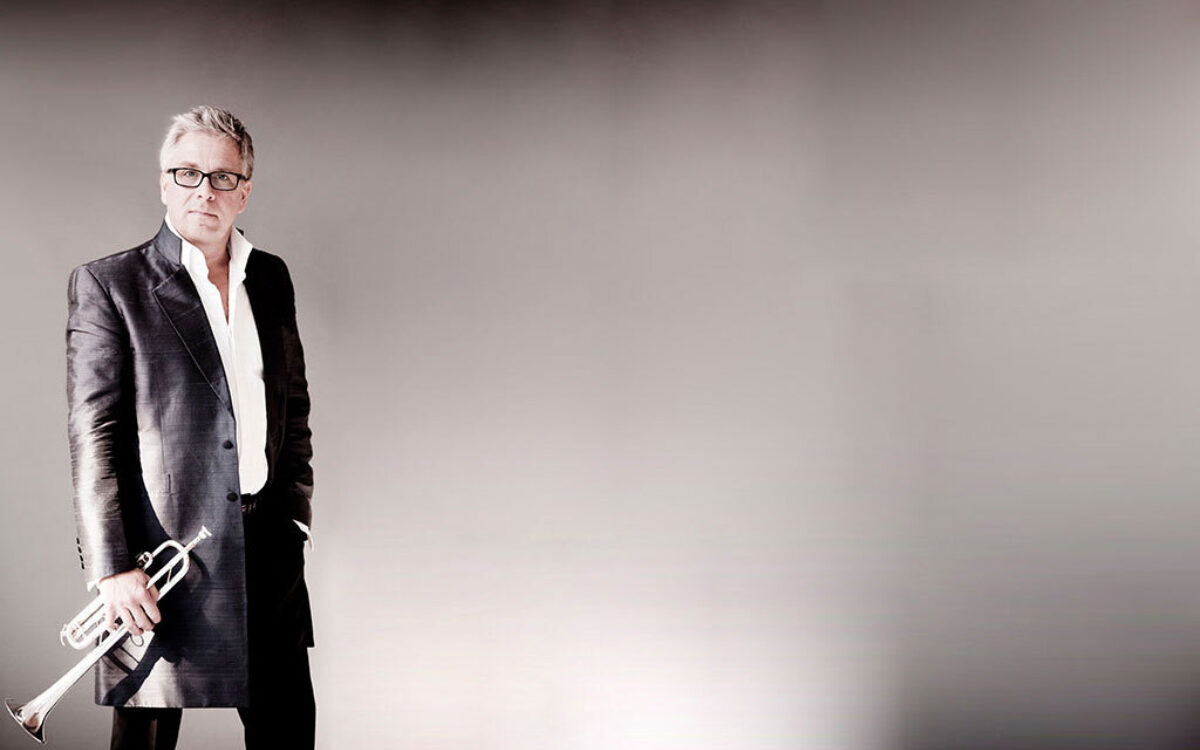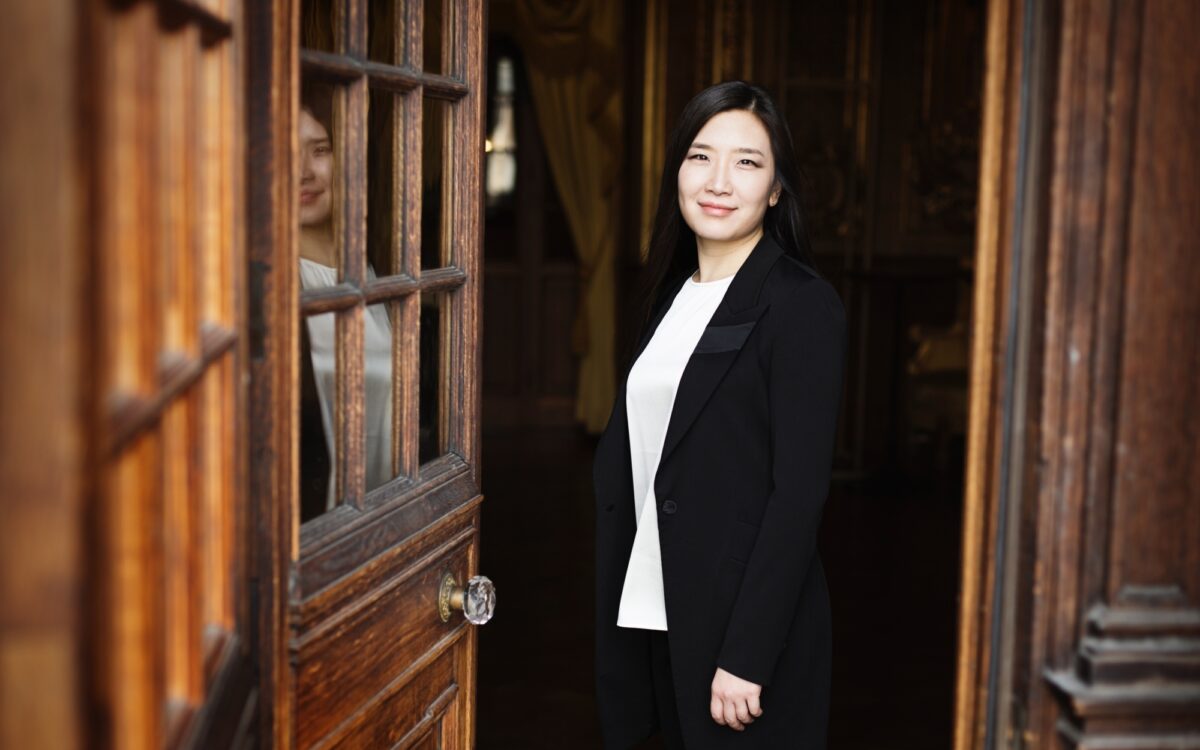Symphony No. 3 in A minor, Opus 44
Sergei Vasilievich Rachmaninoff was born in Semyonovo, Russia, on April 1, 1873, and died in Beverly Hills, California, on March 28, 1943. He began work on his Third Symphony in May 1935, completing two-thirds of it that summer and drafting the rest. He finished the score on June 29, 1936. Leopold Stokowski led the Philadelphia Orchestra in the world premiere later that year, on November 6, 1936.
The score of the Symphony No. 3 calls for 2 flutes and piccolo, 2 oboes and English horn, 2 clarinets and bass clarinet, 2 bassoons and contrabassoon, 4 horns, 4 trumpets and contralto trumpet in F, 4 trombones, tuba, timpani, xylophone, triangle, snare drum, bass drum, cymbals, tam-tam, tambourine, celesta, harp, and strings (violins I and II, violas, cellos, and double basses).
It is astonishing that, of the three symphonies written by a composer so much loved by concert audiences for his piano concertos, only his Second is reasonably well known. All three of the symphonies are filled with the kind of richly pensive, romantic melody and drenchingly sonorous orchestral colors that audiences love, yet the First and the Third are still unfamiliar.
The three symphonies span most of Rachmaninoff’s working life: the First was composed in 1895 and the Third came forty years later, after which his only remaining composition was the Symphonic Dances, Opus 45. It should not be too surprising, then, to find some stylistic changes over that long period, however strongly the composer’s basic personality is imprinted in the score. Indeed, when Stokowski conducted the first performance of the Symphony No. 3, the response of audience and critics demonstrated that the composer was caught in a classic “Catch-22” situation: many music-lovers felt that he had scanted their desire for lushly orchestrated melody and that he had gone “modern.” Even the composer’s close friend, fellow composer Nikolai Medtner, was upset at what he deemed Rachmaninoff’s “modernism,” though it is really hard to imagine what he could have meant by that. Certainly his harmonic treatment is more adventurous, but not so novel as to constitute an impediment to understanding. On the other hand, critics and proponents of the new charged that this music belonged to the turn of the century and that it was forty years out of date. In any case, the symphony failed to capture the hearts of audiences instantly, as his Rhapsody on a Theme of Paganini had done two years previously—and perhaps it was only this sense of disappointment that led to some surprisingly negative reviews.
Rachmaninoff himself was deeply disappointed—to such an extent that he composed nothing for the next seven years. Yet he once commented ruefully of the Third: “It has been heard once in every capital in the musical world; it has been condemned in them all. But it’s quite possible that in fifty years’ time it will be rediscovered like Schumann’s Violin Concerto and become a sensational success.”
“Sensational success” is perhaps too strong a phrase even now, but it is clear that Rachmaninoff’s Third Symphony has an abiding place in the symphonic repertoire. At least we can begin to assess his contribution without fighting our way through a battlefield of entrenched avant-gardists. It is particularly instructive to compare the sarcastic, denigrating article on the composer in the fifth edition (1955) of Grove’s Dictionary of Music and Musicians with the much more informative and balanced contribution in its subsequent editions.
The Third Symphony, one of the small number of works to be composed during Rachmaninoff’s self-imposed exile from Russia after 1917, is indeed one of his strongest and most original compositions. It is, in some ways, more “modern” than any other—though not in any sense that should frighten the music-lover fond of the composer’s romantic streak. It reveals his usual sure touch with orchestral color, calling for a degree of technical virtuosity from his ensemble that he rarely, if ever, demanded elsewhere. (No doubt this was both a tribute and a challenge to the players in Stokowski’s Philadelphia ensemble, with which Rachmaninoff had a particularly close relationship during the last decade of his life, even to the point of conducting a recording of the Third Symphony in 1939.) Moreover, the Third is the most compact of Rachmaninoff’s symphonies, with less of the sometimes rambling (however gorgeous!) structural deviations found in the earlier works.
This is the only Rachmaninoff symphony in three movements; he chose to adopt a procedure that he had already used successfully in his concertos, making a middle movement serve as a combination of slow movement and scherzo. Listeners new to this piece but familiar with other works by Rachmaninoff will not be surprised by two of its characteristic features: the presence of a “motto” theme heard at the outset of the work that recurs in many different guises throughout, and the eventual appearance of the “Dies irae” melody from the plainsong Mass for the Dead. Both elements seem to be part of Rachmaninoff’s basic fatalism, and it is a mood that might well have been regarded as particularly appropriate in the middle-1930s as the world political and economic situation seemed already on the track to an inevitable global conflict.
Rachmaninoff originally drafted the opening motto theme for horns and trumpets, an assertive, if conventional, opening. But he reconsidered, and made it instead into a tentative, even mysterious element, quietly intoned by muted solo cello, horns, and clarinets. It is a modal stepwise theme, covering only three notes, a minor third. Its habit of winding around a single note and constantly turning back on itself seems like a fatalistic gesture, evoking a mood of hopelessness against which it is the purpose of the music to struggle. And it bears a family resemblance to the “Dies irae” theme that will emerge in the finale. Meanwhile it appears in many guises, both obvious and subtle.
Having presented this motto just once, Rachmaninoff launches into the main section of the sonata form movement. The principal theme, first heard in the woodwinds, is sweetly mournful and redolent of Russian sound, a lament for things lost, while the second theme, presented warmly by the cellos, is one of those richly romantic Rachmaninoff melodies that win all hearts at once. These elements are developed compactly and with great skill and rhythmic energy propelled by racing triplet figures. The development makes no use of the second theme, so when the motto brings back the recapitulation, Rachmaninoff makes quick work of the principal theme, which has had quite a workout, and lavishly extends the second theme in new colors. Hushed staccato strings remind us of the motto as the movement closes.
The opening slow section of the middle movement seems designed to arouse expectation. The horn, singing like a medieval bard against the harp’s accompaniment, presents yet another version of the motto now turned into a fragment of epic song. Then comes a string of special melodic gestures and colors—a chromatic violin solo with a descending melody; another melody for the unison violins, now rising; a brief flute melody. These are extended and developed into a shimmering web, then dissolve into a preparatory Allegro vivace passage that brings in the main scherzo theme in the strings. This is highly colored music, even theatrical in its feel, suggesting visual images (though the composer has not informed us if he had any such ideas in his head). Eventually the scherzo dies away and Rachmaninoff engineers a careful return to the slow tempo again, in which all of the material previously heard is reinterpreted in a gentle, nocturnal mood.
The finale is bold and vigorous. The opening string figure drives along with great energy, eventually to be transmuted into a splendid fugue. The rushing character of this music occasionally pauses for brief lyrical interludes, gradually introducing the idea of the “Dies irae,” which grows more and more prominent. Following the dark hints which that melody always seems to bring with it, Rachmaninoff works up to a vivid and brilliant close, designed to show off the virtuosity of the modern symphony orchestra with tremendous éclat.
Steven Ledbetter
Steven Ledbetter, a freelance writer and lecturer on music, was program annotator of the Boston Symphony Orchestra from 1979 to 1998.
The first Boston Symphony Orchestra performances of Rachmaninoff’s Symphony No. 3 were led by Serge Koussevitzky in March/April 1947, including performances in Boston, New Haven, New York, Brooklyn, and Hartford.



